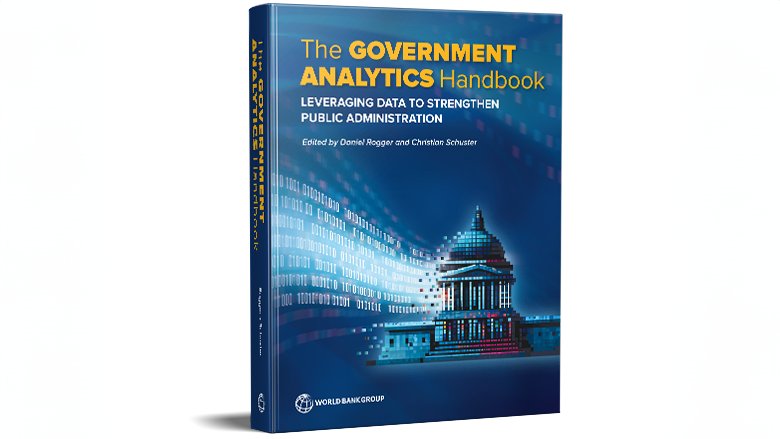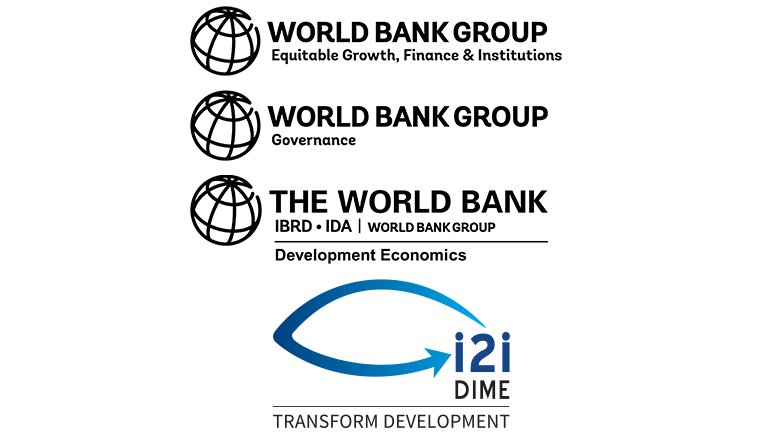PART 2. Foundational Themes in Government Analytics
Chapter Summaries
-
Chapter 4. Measuring What Matters Principles for a Balanced Data Suite That Prioritizes Problem Solving and Learning
Kate Bridges and Michael Woolcock
Responding effectively and with professional integrity to public administration’s many challenges requires recognizing that access to more and better quantitative data is necessary but insufficient. An over-reliance on quantitative data comes with its own risks, of which public sector managers should be keenly aware. We focus on four such risks: First, that attaining easy-to-measure targets becomes a false standard of broader success. Second, that measurement becomes conflated with what management is and does. Third, that measurement inhibits a deeper understanding of the key problems and their constituent parts. And fourth, that political pressure to manipulate key indicators can lead, if undetected, to falsification and unwarranted claims or, if exposed, to jeopardizing the perceived integrity of many related (and otherwise worthy) measurement efforts. Left unattended, the cumulative concern is that these risks will inhibit rather than promote the core problem-solving and implementation capabilities of public sector organizations, an issue of high importance everywhere but especially in developing countries. We offer four cross-cutting principles for building an approach to the use of quantitative data – a ‘balanced data suite’ – that strengthens problem-solving and learning in public administration: (1) Identify and manage the organizational capacity and power relations that shape data management; (2) Focus quantitative measures of success on those aspects which are close to the problem; (3) Embrace a role for qualitative data, especially for those aspects which require in-depth, context-specific knowledge; and (4) Protect space for judgment, discretion and deliberation in those (many) decision-making domains which inherently cannot be quantified.
-
Chapter 5. Practical Tools for Effective Measurement and Analytics
Maria Ruth Jones and Benjamin Daniels
An increasingly important feature of good data analysis is the transparency with which the analysis is undertaken and its ability to reproduce its results. These features ensure the credibility of analytical outputs and policy guidance. The World Bank’s ‘Development Impact Evaluation’ (DIME) Department has developed freely available tools and processes to support the achievement of these best practices by analysts across the world. These resources include research-cycle frameworks, extensive training tools, detailed archives of process and technical guidance, and a collaborative approach to data and analytics. The DIME Analytics team continuously updates many of these resources and makes them available globally as a free knowledge product. This chapter describes the frameworks, the approach, and the products that are available to bring these best-practices into any organization that relies on data analytics for decision-making. The chapter provides a discussion of how to apply these elements to public administration, thus ensuring analytics of government accord with international best practices.
-
Chapter 6. The Ethics of Measuring Public Administration
Annabelle Wittels
As the use of data collection within government on government becomes more prevalent, there is a need for review of research and data ethics, fit for use within public administrations. While guides for public sector employees and use of data on citizens exist, there is a dearth of discussion and practical guides on the ethics of data collection by government on its own employees. This chapter provides a heuristic of ethical considerations facing public administrations when collecting data on their employees, which can be seen as having to balance three dimensions: (i) an individual dimension which comprises demands for dignity and privacy, (ii) a group dimension which relates to allowing for voice and dissent, and (iii) a public-facing dimension which ensures that analytics enable public administrators to deliver on public sector values - accountability, productivity, and innovation. The chapter uses this heuristic to investigate ethical questions and to develop a 10-point framework for the use of governments to create fair and equitable data collection approaches.
-
Chapter 7. Measuring and Encouraging Performance Information Use in Government
Donald Moynihan
Public sector organizations can leverage government analytics to improve the quality of their services and internal functioning. But the existence of government analytics does not ensure its use. This chapter discusses how governments can measure its use – or conduct analytics on government analytics. The chapter assesses, in particular, one important component of government analytics: performance management information systems. It does so by, first, contrasting different types of performance management information uses, including political and purposeful. The chapter, next, assesses different approaches to measure performance information use, including survey-based, administrative data-based and based on qualitative inquiry. Lastly, the chapter illustrates how the measurement of performance information use can be built over time and drawn on to improve government analytics, using the example of the U.S. Government Accountability Office. The chapter’s findings underscore the important of a robust measurement of use of government analytics to enable governments to make the most of government analytics.
-
Chapter 8. Understanding Corruption through Government Analytics
James Anderson, David S. Bernstein, Galileu Kim, Francesca Recanatini, and Christian Schuster
Corruption is a multidimensional phenomenon that affects governments and citizens across the world. Recent advances in data collection and analytics have generated new possibilities to both measure corruption and evaluate the impact of policies aimed at reducing it. This chapter illustrates how the production function introduced in chapter X can help conceptualize how to measure corruption within the public administration, understand where it is more likely to prevail and what can be done to address it. This chapter connects the issues discussed in the other chapters of this Handbook by outlining how corruption can be detected in its multiple dimensions using the approaches outlined in this book, from inputs – personnel, budget – to outputs such as public services. It draws together novel data and analytical efforts highlighting how government analytics can be embedded within a broader institutional framework, as well as emphasizing the role of political economy constraints to policy reforms.
Handbook Teaser Trailer
-
SPONSORS
A collaboration between the Development Impact Evaluation Department, Office of the Chief Economist of Equitable Growth, Finance and Institutions.
Chapters
Part 1: Overview
Chapter 1: The Power of Government Analytics to Improve Public Administration
Chapter 2: How to Do Government Analytics: Lessons From the Book
Chapter 3: Government Analytics of the Future
Part 2: Foundational Themes in Government Analytics
Chapter 5: Practical Tools for Effective Measurement and Analytics
Chapter 6: The Ethics of Measurement of Public Administration
Chapter 7: Measuring and Encouraging Performance Information Use in Government
Chapter 8: Understanding Corruption Through Government Analytics
Part 3: Government Analytics Using Administrative Data
Chapter 9: Creating Data Infrastructures for Government Analytics
Chapter 10: Government Analytics Using Human Resource and Payroll Data
Chapter 11: Government Analytics Using Expenditure Data
Chapter 12: Government Analytics Using Procurement Data
Chapter 13: Government Analytics Using Data on the Quality of Processes
Chapter 14: Government Analytics Using Customs Data
Chapter 15: Government Analytics Using Administrative Case Data
Chapter 16: Government Analytics Using Machine Learning
Chapter 17: Government Analytics Using Data on Task and Project Completion
Part 4: Government Analytics Using Public Servant Surveys
Chapter 18: Surveys of Public Servants: The Global Landscape
Chapter 20: Determining Sample Sizes: How Many Public Officials Should Be Surveyed?
Chapter 21: Designing Survey Questionnaires: Which Survey Measures Vary, and for Whom?
Chapter 22: Designing Survey Questionnaires: To What Types of Survey Questions Do Public Servants Not Respond?
Chapter 24: Interpreting Survey Findings: Can Survey Results Be Compared across Organizations and Countries?
Chapter 25: Making the Most of Public Servants Survey Results: Lessons from Six Governments
Chapter 26: Using Survey Findings for Public Action: The Experience of the US Federal Government
Part 5: Government Analytics Using External Assessments
Chapter 27: Government Analytics Using Household Surveys
Chapter 28: Government Analytics Using Citizen Surveys: Lessons from the OECD Trust Survey
Chapter 29: Government Analytics Using Measures of Service Delivery
Chapter 30: Government Analytics Using Anthropological Methods






